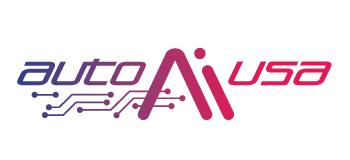Radovan Miucic
Senior Intelligent Vehicle Engineer at ChanganUS Research & Development Center
In the course of the 2018 Auto.AI Europe, we.CONECT spoke with Radovan Miucic, Senior Intelligent Vehicle Engineer at ChanganUS R&D Center about the role AI and cognitive computing play in self-driving car technologies. Radovan Miucic shared his insight into the different approaches that Automotive OEMs/Teir1 suppliers and Software / Robo-taxi companies take on the road to automated transportation.
Changan Automobile is an automotive OEM headquartered in Chongqing, China. The company operates 12 production locations and 32 automotive related plants, with approximately 90,000 employees. The US Research & Development Center, which began operations in January 2011, is the first advanced research and development facility to be established by a Chinese automaker in Michigan. It joins Changan’s other global R&D centers located in Italy, Japan, England, and China.
Radovan Miucic: I am technical specialist for the Connected and Automated vehicle Research and Development at Changan US R&DCenter, Inc. I lead a team of engineers responsible for researching and developing innovative cooperative applications for autonomous and advanced driver safety. Our work includes V2X applications, collaborative perception and platooning.
Radovan Miucic: Autonomous driving is cutting edge technology involving many challenging and complex problems that are really fun to work on. It holds a promise of increased personal mobility and free time for other activities. Autonomous driving will not only be safer but also will contribute to the wellbeing of the travelers i.e. reducing stress during daily work commute.
Radovan Miucic: Traditional automotive OEMs will roll out automated features in the restricted access roads first. Robo-taxi companies will roll out the fully automated cars in more challenging environments. The two groups approach the problem from different angle. For Robo-taxis, it may be acceptable to include very expensive sensors needed for perception and redundancy, however traditional OEMs will pay attention to cost conscious decision on the type of sensors going into the production.
Radovan Miucic: AI plays very important role in the perception and path planning part of the autonomous development. At the moment, AI is not so much part of the actual controls of the vehicle. As more and more data will be available, we will witness an expansion of the AI based solutions in every domain including automotive.
Radovan Miucic: A human, as a driver, is very adaptable to sudden changes. Dealing with changes in weather, road surface and traffic conditions comes natural to us. A machine, even AI based, is good at well-defined tasks and perhaps less adaptable to sudden challenges. Level 5 in California on a sunny day with a well mapped road is one thing but a vehicle in rural Michigan during winter is another.
Radovan Miucic: We are collecting data and exploring different neural network designs for various vehicle functions. Some of the challenges we are facing are acceptance of the AI technology, technical difficulties, and its high development costs.
Radovan Miucic: Firstly, I talked about current and ongoing research I am involved in Changan. These include the Collaborative Perception and V2V enabled Platooning.
Secondly, I asked my peers questions and started a discussion about:
- The path to automated transportation: Automotive OEMs/Teir1 suppliers versus Software/Robo-taxi companies
- Automotive OEMs/Teir1 suppliers tend to develop autonomous features gradually, introducing partial automation (L2 and L3). Software/Robo-taxi companies are (skipping L2 and L3) starting their development from fully automated levels (L4 and L5). The two approaches have different requirements for sensing capabilities
- Which approach is more viable?
- Will this mixture of autonomous levels be an issue?
- How will our manual driving be affected with various autonomous vehicles sharing the road
- Autonomous vehicle deployment
- Automotive OEMs/Teir1 suppliers often limit the autonomous features to highways and restricted access roads. Software/Robo-taxi companies are trying to solve autonomous driving for all environments including urban and suburban roads. We discussed what is likely to be near the term deployment path - dedicated lanes on highways?
- Performance of the Artificial Intelligence can match or exceed the classical methods. AI is already part of the sensing systems. For example, performance of AI in classification of the objects form camera sensors typically outperforms any equations based methods.
Similar findings could be said about vehicle controls
- Would you trust AI based vehicle controller?
- What would it take for the automotive industry to accept AI based controls?
- How to certify AI based controls
- Does functional safety still apply to AI based solutions? What about systems that support online learning?
Discover the next era of automated and self-driving cars – now!
Auto.AI USA will take place 28 February – 01 march 2019 at South San Francisco Conference Center
The Auto.AI is America’s first platform bringing together all stakeholders who play an active role in the deep driving, computer vision, sensor fusion, perception and cognitive vehicles scene. The event provides you with precise insights into new technical innovations and challenges regarding the integration of AI and machine learning based systems into Level 4 & 5 vehicles.


